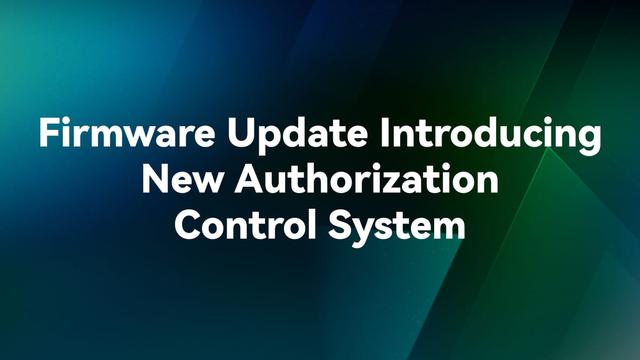Forgot to mention it but I got myself a 3D Printer as an early birthday present to myself!
Recent searches
Search options
#p1s
Кстати, если кто-то облизывался на принтеры Bambu Lab и срач с прошивкой не перебил желание продолжать облизываться, то возможно сейчас тот самый момент.
У них выходит новый принтер и их P1S работающий по системе CoreXY можно купить сильно дешевле - вплоть до 66к рублей в России за базовый набор и до 99к за комбо с AMS.
Сами принтеры правда хорошие - я бы только предложил если решите покупать перевести их в LAN режим и не накатывать обновления не прочитав чейнджлоги.
P.S. Только имейте в виду, что P1S будет громче, чем A1 если вы не будете его моддить.
I may be closer to print farm status than I thought. But with all the printing I'm doing lately, it seemed logical to upgrade to get a bigger and faster printer to help speed up the long que of projects I have. Welcome home, Bambu P1S combo. I love you already. #3dprinting #BambuLab #p1s
Hueforge: High Rez Color Pictures on your 3D Printer Hueforge prints using very thin layers so that colors bleed through to create blends, shades and gradients on any printer. chasingdings.com/2025/02/21/h... #3DPrinting #bambu #HueForge #p1s
Hueforge: High Rez Color Pictures on your 3D Printer
Hueforge prints using very thin layers so that colors bleed through to create blends, shades and gradients on any printer.
https://chasingdings.com/2025/02/21/hueforge-high-rez-color-pictures-on-your-3d-printer/
Der Prototyp meines neuen #Allsky Gehäuse macht deutliche Fortschritte.
#3dprinting #Freecad #BambuLab #p1s
I doubt I am alone in debating building a lobotomy kit (or stripping it for a custom build) so that BTT announcement brings me ridiculous joy. I ran a bunch of their boards in my old Ender and they've been awesome.
If you were considering a lobotomy and want to go more hands-on than BTT, check out this project. They are building a Klipper swap-in for the P1 series. It is brand new and nowhere near feature complete, but proceeding super fast. (Technically, you could print with it today even with an AMS but it is a very young project. Don't hassle them about missing features.)
#3dprinting #bambu #bambulab #bigtreetech #p1s #klipper
I guess I won't be upgrading my #P1S firmware anymore, #Bambu Lab is going full #DRM...
https://blog.bambulab.com/firmware-update-introducing-new-authorization-control-system-2/

After I released a Panda Touch Dock some time ago, which can be mounted directly on a #BambuLab #P1S / #P1P, now the desktop version in the same design follows.
Here you’ll find the live render:
https://collaborate.shapr3d.com/v/eCWz18wX6XNIAbqkyZlZb
Already printed quite some stuff, and I'm shocked by the quality. Can't even see the layers. I still need to get used to the speed . I'm I'm scared as hell. Can't believe how the perfect amount of filament is deposited in the exact right spot while the nozzle is moving so fast that my eyes can barely follow it ! All of that without even tweaking anything yet.
Also unlocking klipper and using fluidd is a joy. The integration with #homeassistant is just what makes this printer the perfect addition to my tech team. Like most people I thought a lot between #k1c and #p1s from Bambu lab and mainly went with the former because of the open source environment. A good choice.
Damn! This is not what I expected to see this morning. The first failure of this kind in the last 3 years.
I’m not an engineer, I’m not a 3D printing pro, and I have tried to stay away from that hobby, lest it consume my life. I did study engineering at university and got a degree, but I’ve never done professional engineering.
So when my partner was all “we should get a printer” I was all “let’s do the research”. So she did her usual 6 months of comparison shopping and decided that the Bambu Labs P1S with an AMS was the printer for us. Easy, user friendly, high quality, well made and well supported. I read the reviews too so when it arrived, I was *so* ready to be a Bambu Labs true believer, but the devil is in the details and holy heck there’s a lot of details.
I remain very impressed with this Bambu labs printer. Everything "just works" so far, and today I tried resizing these dessicant boxes to use more beads in other places, and they too are perfect right off the plate.
Is there anyone here who has both a #BambuLab #X1C AND a #P1S?
I have noticed that the housings differ slightly in width and depth, where they should be the same size. Specifically, it concerns the recess at the top where the glass plate is inserted. The internal dimensions of my P1S are about 1.5 mm larger than those of the X1C.
Can anyone confirm this?
Please share, thank you. 
Having a terrible time trying to print warhammer dreadnoughts. 9hr print failed on torso and legs - using waste from that for a wreckage object - but now a tiny bit on the latest plate is loose.
The bambu software let me tell the printer to stop trying JUST THAT PART and continue with the rest. Will print that one part later, more carefully. Even when it goes wrong this printer is awesome. Lol. #3dprinting #p1s
After we got our #Bambu #P1S printer I have printed out more things than I did before we got it. Before this I had a #Ender3v2 and before that a #Monoprice printer that only printed PLA. But dear wholy, nothing has gone wrong, only prints that have failed were because of the design (pegs not joined with the body in one #Skadis thing I made).
So this is the feeling other 3D printing people have been feeling all the time? I love it!
Funny thing. I ordered a #BambuLab #P1S #3DPrinter some days ago, then 3 days later I ordered some #Filament from them as well. These are a Friday and a Monday. Both are shipping from Germany and guess what package is going to be delivered today?
You guessed it, the filament!
But it's fine, I'm just really looking forward to using the new printer and selling my #Ender3v2
This was gonna be more eloquent before a neighbor/cop in uniform did his cop knock on my front door and hit the doorbell twice. To ask if my car was for sale. Like, essentially asking a favor.. Seriously? WHAM WHAM WHAM. No. It wasn't for sale before and it is even less for sale now. Go away. (He's mad at my custom Harris sign that calls his union's favorite spoiler candidate a jackass.)
Ahem. Anyway. Yesterday I finally got around to yanking #emqx out and putting #mosquitto back in. Grafana does fine, I don't miss the dashboards much.
Today I made it eavesdrop on my #Bambulab #P1S so that I could do automating without all the limitations of the onboard #MQTT.
If you're curious, it is pretty simple. Just don't write or subscribe anywhere it doesn't expect or it will kick you out. (Fill in your PIN and serial number, and you can fetch bridge_cafile from the printer with openssl.)
remote_username bblp
remote_password 1234654
bridge_cafile /mosquitto/panda/blcert.pem
bridge_insecure true
notifications_local_only true
try_private false
bridge_protocol_version mqttv311
topic device/01Pdfdfdfdffdfd/report in
topic device/01Pdfdfdfdffdfd/request outFor all users of #BambuLab printers who also use a #PandaTouch. This could be interesting.
I have developed a dock that is screwed to a #P1P or #P1S, “encloses” the original display and gives the Panda Touch a tilt mechanism like the one on the #X1C display.


